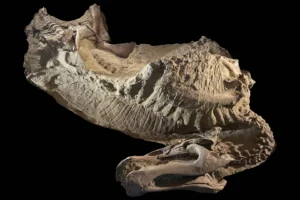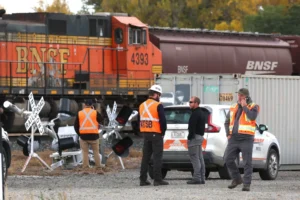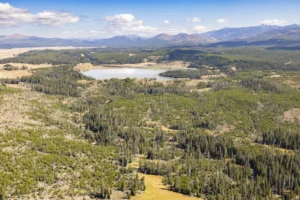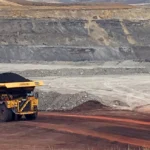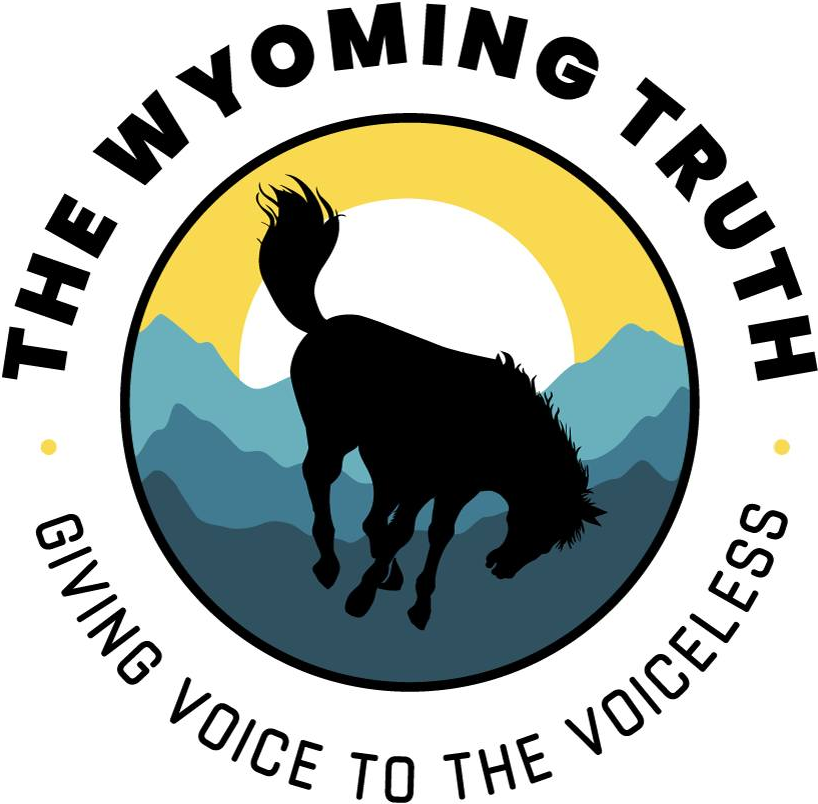Harshest Winter in Recent Years Taking Its Toll on Wyoming Wildlife
Heavier snowfall, more below-zero temperature days killing off pronghorn, mule deer
- Published In: Other News & Features
- Last Updated: Apr 02, 2023

Hundreds of pronghorn and mule deer have died from harsh winter conditions this year. Pronghorn have also died from pneumonia caused by Mycoplasma bovis, with the majority of the mortalities occurring south of Pinedale. (Courtesy photo from the Wyoming Game and Fish Department)
By Shen Wu Tan
Special to the Wyoming Truth
It’s been a tough winter for Wyoming’s mule deer and pronghorn herds, as they grappled with heavier snowfall, freezing temperatures and a disease outbreak.
About 300 pronghorn carcasses have been removed by the Wyoming Game and Fish Department since mid-February. The department noted it is likely there are even more undetected carcasses hidden below the heavy snowpack.
Additionally, over 500 pronghorns are estimated to have died from pneumonia caused by Mycoplasma bovis, the pathogen identified as infecting the species that appears to be spreading. The source of the infection is currently unknown, with most of the pronghorn mortalities occurring south of Pinedale and at least one carcass testing positive for the pathogen as far south as Rock Springs.
However, Wyoming Game and Fish Department staff are reporting an increasing number of animals dying from malnutrition and the impacts of a drawn-out, difficult winter rather than from the disease.
This year, there were 62 days of below zero temperatures, nearly double the 30-year average of 39 days dipping into negative Fahrenheit degrees, according to data recorded at the Pinedale airport. The colder temperatures paired with higher amounts of snowfall — many areas are experiencing 125% to 150% of the average snowpack — made this winter one of the most challenging the Cowboy State has undergone in recent years.
Brian Nesvik, director of the Wyoming Game and Fish Department who spoke at a town hall meeting in Pinedale last week, informed attendees that Pinedale, Jackson, Star Valley and the southwest part of the state and over to Baggs are areas of the states that have experienced the worst winter conditions.
In turn, the outbreak and the winter conditions could impact hunting this year.
“What a lot of this means to all the areas I just described is significant cuts in hunting opportunities for those species that are affected: pronghorn and mule deer,” Nesvik said. “We’re continuing now to monitor that. We haven’t set the [hunting] seasons for next year. This is still ongoing. This situation is continuing today.”
The need to protect wildlife habitats and migration routes
Using GPS collars, biologists can measure wildlife mortality. Out of 83 adult female pronghorn wearing GPS collars south of Pinedale at the start of winter, about 50% died either from harsh weather conditions or pneumonia, the game and fish department reported. Typically, the adult pronghorn mortality in the Sublette herd is around 20%.
Many wild animals often don’t die from winter conditions until April or even early May; therefore, biologists are anticipating more pronghorn deaths in the Sublette herd. Consequently, game and fish department managers are suggesting cutting back on pronghorn hunting licenses for next fall.
Although mule deer haven’t been affected by the outbreak, the Wyoming Game and Fish Department said it is probable many will die from winter conditions. Of the 128 GPS-collared does in the Wyoming Range mule deer herd, 35% have died since the start of winter, higher than the usual rate of 20%. Of the 92 juvenile deer wearing GPS collars, 90% of them have died so far.
“Again, with winter showing little sign of subsiding, those numbers, which are already well above average, are sure to keep climbing,” the Wyoming Game and Fish Department said in statement. “Wildlife managers won’t be able to get an accurate assessment of the losses to pronghorn and mule deer in western Wyoming until a majority of the snow melts. But it is clear there are going to be significant losses and hunters can expect much more conservative hunting seasons for both species next fall.”
At the town hall meeting in Pinedale, Keith Monteith, a professor at the University of Wyoming’s Haub School of Environment and Natural Resources, told the crowd that proposed solutions such as feeding antelope and mule deer are ineffective because the digestive systems of these animals cannot rapidly adapt to hay.
The best solution, in Monteith’s opinion? To protect migration routes and habitats so animals can more easily seek forage and build up their body fat content ahead of winter, when shrubs and sagebrush are in short supply.
Linda Baker, director of the Upper Green River Alliance and one of the town hall attendees, pointed out how the Sublette pronghorn herd population has declined over the years and urged Wyoming agencies to do more.
“It all comes down to habitat, maintaining and protecting quality habitat and protecting pronghorn’s ability to get to the food and shelter they need to survive,” Baker said. “It comes down to protecting the migration corridors that connect landscape-scale winter ranges and summer ranges throughout this valley. And that’s the one thing…that this state has failed to do. It’s all that’s left to do to save our herds.”
The Wyoming Game and Fish Department said it will continue to monitor conditions and consider them when making decisions about hunting quotas and seasons this year.
Gov. Mark Gordon, who spoke at the town hall meeting, said, “Wyoming people care deeply about our wildlife. That was clearly shown today…. I am committed to working with our citizens to provide healthy wildlife populations for generations to come.”

